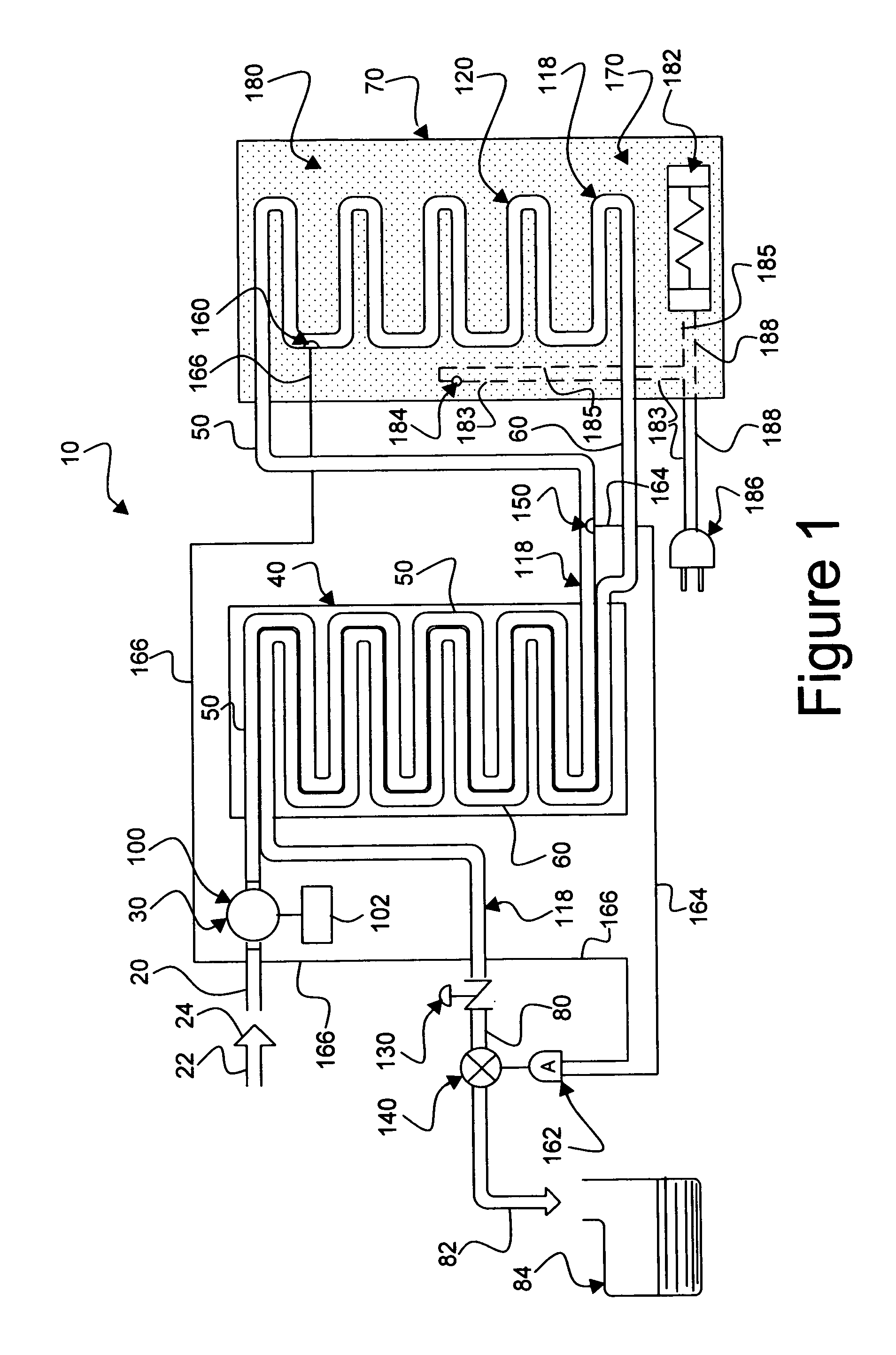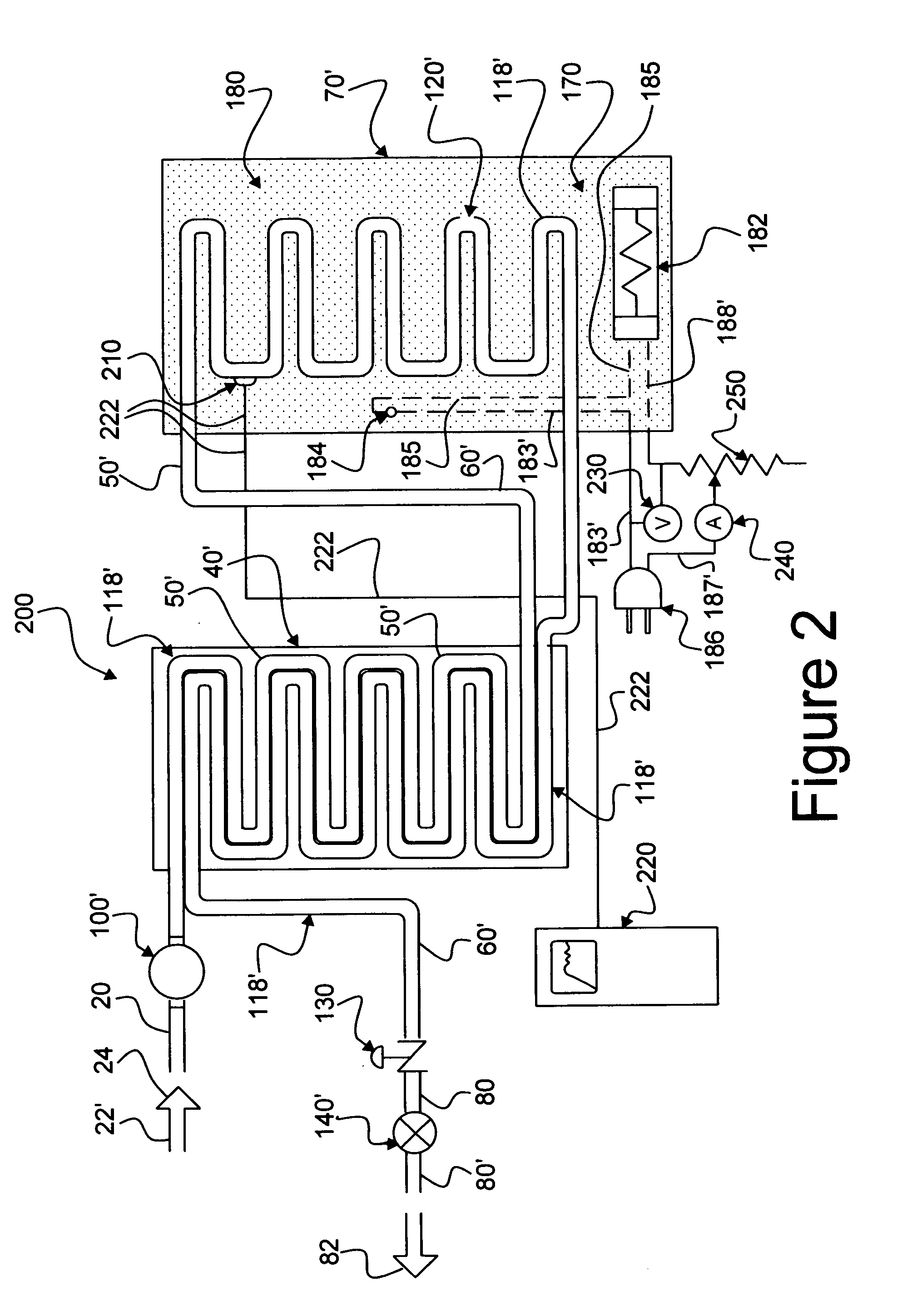Self-contained, self-cleaning aqueous liquid sterilizer
a self-cleaning, aqueous liquid technology, applied in the direction of moving filter element filters, separation processes, filtration separation, etc., can solve the problems of ineffective use of light, inconvenient cleaning, and inability to clean, so as to achieve safe and efficacious decontamination of aqueous liquids
- Summary
- Abstract
- Description
- Claims
- Application Information
AI Technical Summary
Benefits of technology
Problems solved by technology
Method used
Image
Examples
Embodiment Construction
[0053]In this description, the term proximal is used to indicate nearness of a referenced item to the object of the sentence describing its position. The term distal should be interpreted as indicating “away from” a referenced item. Numbers and primes of the same numbers are used to indicate items of related mechanics and function, but which may have physical differences.
Continuously Operating Model Disclosure
[0054]Reference is now made to the embodiment illustrated in FIG. 1. While only a single embodiment is provided herein, it should be apparent to one skilled in water and other aqueous liquid purification by sterilization that other embodiments may be employed within the scope of the invention.
[0055]As seen in FIG. 1, a water sterilization system 10 comprises an influent channel 20, wherethrough water from a source 22 (see arrow 24) is delivered, a flow controller subsystem 30, a heat exchanger 40 through which influent liquid flows in an input pathway 50 and through which efflu...
PUM
| Property | Measurement | Unit |
|---|---|---|
| energy | aaaaa | aaaaa |
| pressure drop | aaaaa | aaaaa |
| pressure | aaaaa | aaaaa |
Abstract
Description
Claims
Application Information
 Login to View More
Login to View More - R&D
- Intellectual Property
- Life Sciences
- Materials
- Tech Scout
- Unparalleled Data Quality
- Higher Quality Content
- 60% Fewer Hallucinations
Browse by: Latest US Patents, China's latest patents, Technical Efficacy Thesaurus, Application Domain, Technology Topic, Popular Technical Reports.
© 2025 PatSnap. All rights reserved.Legal|Privacy policy|Modern Slavery Act Transparency Statement|Sitemap|About US| Contact US: help@patsnap.com



